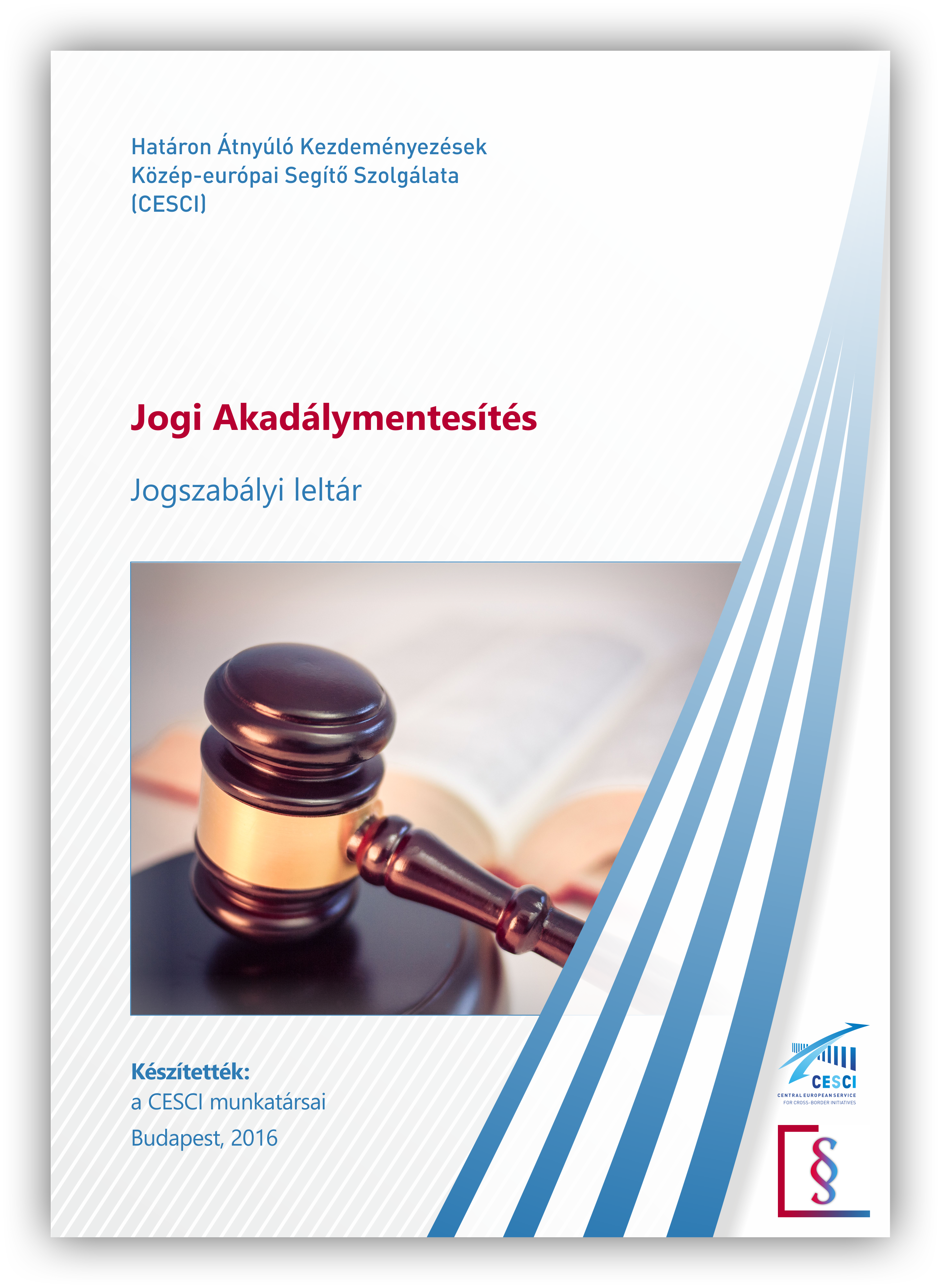You can download the Legislative inventory prepared in the framework of the project by clicking on the following picture:
During the legal analytical phase, we reviewed the legal environment of the obstacles identified at the workshops. When presenting the legal framework, we concentrated mainly on the legislation in Hungary but in the cases when it was necessary, we also touched upon the legal resources created by the European Union.
In the framework of the legal inventory, with respect to the 39 obstacles or groups of obstacles discussed in detail earlier we reviewed in total nearly 250 provisions. Among these, there were both EU and Hungarian provisions. In some cases, we analysed the legislations of the neighbouring countries, as well. Beside the desk research, in some cases, it became necessary to negotiate with the relevant authorities with a view to clarifying the legislators’ or the law enforcement officials’ interpretation.
During the compilation process of the legal inventory, we used the National Inventory of Legislations in case of the Hungarian law, the EUR-Lex database for the EU provisions and the N-Lex database for those of the neighbouring countries.
The legal framework of the obstacles identified at the workshops shows a mixed picture after the analysis of the legislations.
In the case of several specified obstacles, it cannot be set out that we clearly face a legal barrier. Their sectoral field is ruled according to long-term policy principles and interests, which apparently do not allow room for manoeuvering to modify the relevant legislations (e.g. public security, animal health issues).
In the respect of certain barriers, real progress can be envisaged only if the policy attitude of the relevant states moves toward cooperation. It is the case with local products. Territorial delineation of the particular provisions and the limitation of the territorial jurisdiction of the authorities currently prevent the citizens living in border areas to have access to local products with as wide a range as e.g. their counterparts living in more central regions of the country.
In some cases, the current legislation is comprehensible and well-justified along policy principles but it hinders cross-border cooperation in a hardly acceptable way. It is the case with the duty-free goods transported to third countries where regardless of that duties are not applied for these products and materials; the customs procedures are not avoidable.
In the respect of several cases, during the analysis of the legal environment it became clear that no legal obstacle backs the issue but the stakeholders have false or inaccurate information on that.
As a result of the legal analysis, we had the opportunity to identify several cases where the design of the legislation facilitating cross-border interactions already started or it has been under way for a longer time. A few of them already have tangible outputs and eases the daily life of the people affected by cross-border interactions. However, these initiatives typically need further improvements and completion.
As a result of our examinations, we found 2 obstacles requiring international legal harmonisation, 12 ones which make both legal and policy interventions necessary. Further, we identified one practical and one policy problem, as well as 3 barriers which, apart from legislation, contain also other factors.
